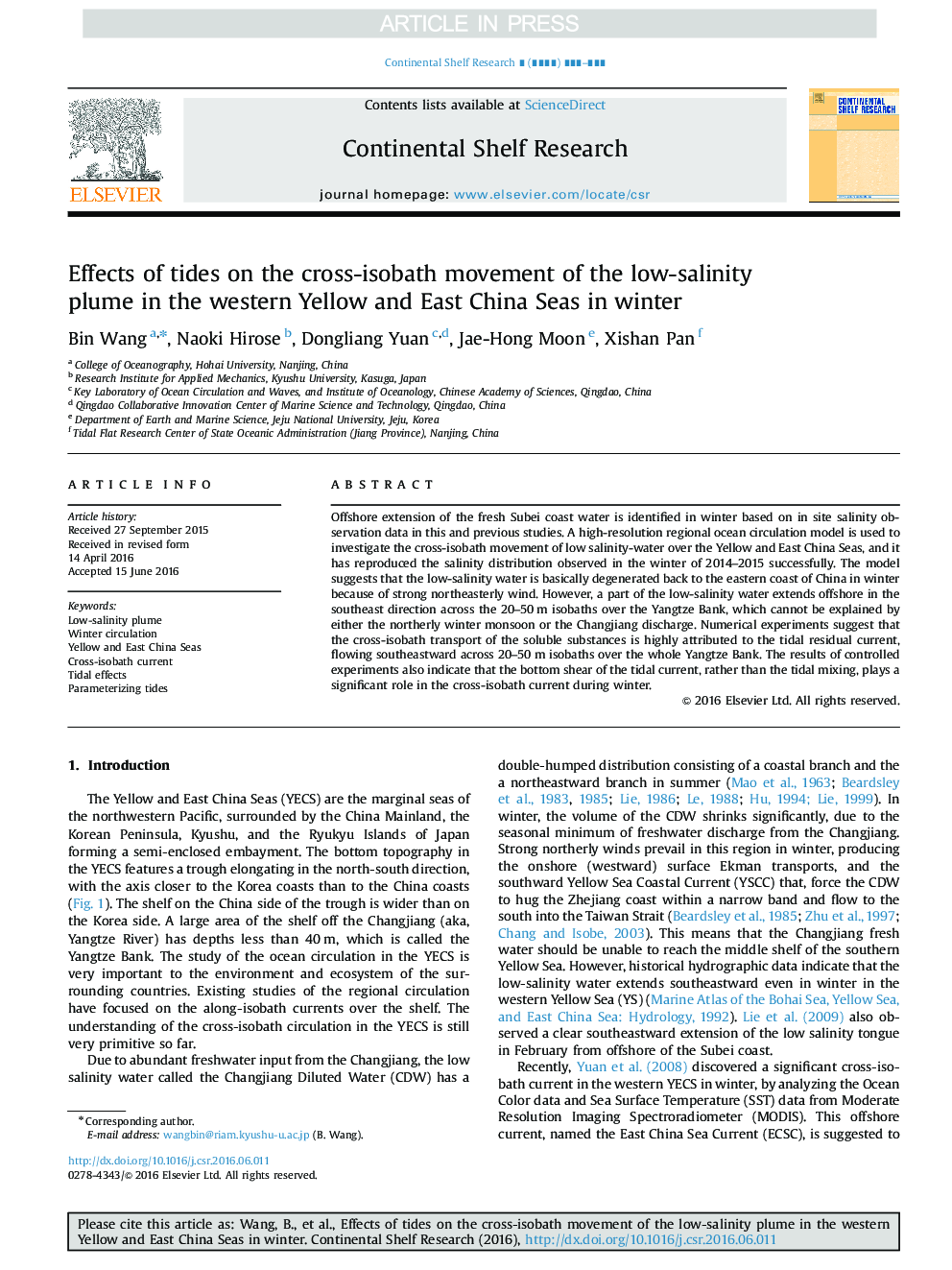| Article ID | Journal | Published Year | Pages | File Type |
|---|---|---|---|---|
| 5764403 | Continental Shelf Research | 2017 | 12 Pages |
Abstract
Offshore extension of the fresh Subei coast water is identified in winter based on in site salinity observation data in this and previous studies. A high-resolution regional ocean circulation model is used to investigate the cross-isobath movement of low salinity-water over the Yellow and East China Seas, and it has reproduced the salinity distribution observed in the winter of 2014-2015 successfully. The model suggests that the low-salinity water is basically degenerated back to the eastern coast of China in winter because of strong northeasterly wind. However, a part of the low-salinity water extends offshore in the southeast direction across the 20-50Â m isobaths over the Yangtze Bank, which cannot be explained by either the northerly winter monsoon or the Changjiang discharge. Numerical experiments suggest that the cross-isobath transport of the soluble substances is highly attributed to the tidal residual current, flowing southeastward across 20-50Â m isobaths over the whole Yangtze Bank. The results of controlled experiments also indicate that the bottom shear of the tidal current, rather than the tidal mixing, plays a significant role in the cross-isobath current during winter.
Related Topics
Physical Sciences and Engineering
Earth and Planetary Sciences
Geology
Authors
Bin Wang, Naoki Hirose, Dongliang Yuan, Jae-Hong Moon, Xishan Pan,
